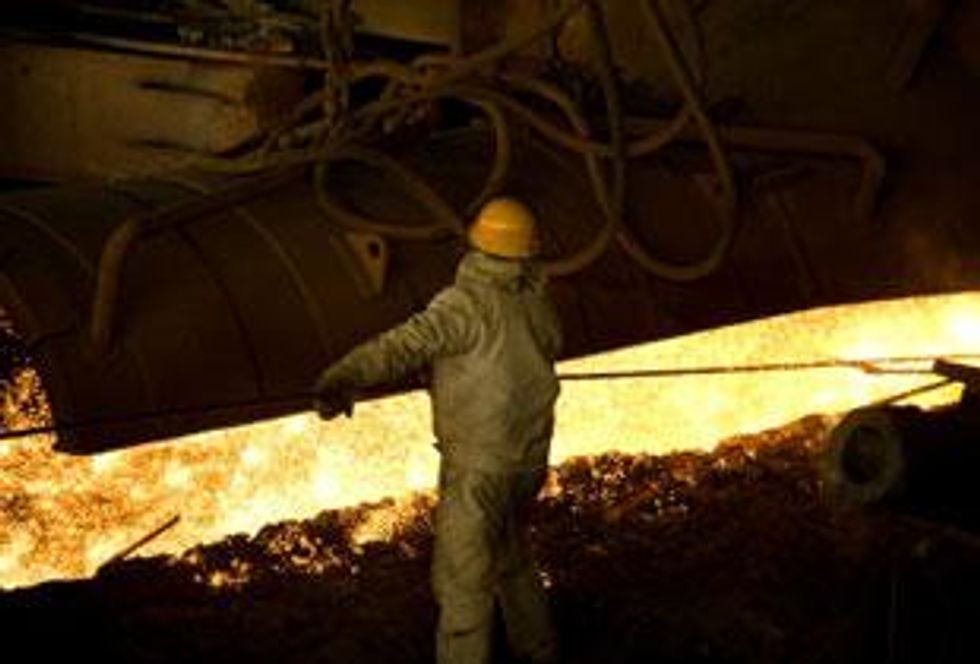The top ten copper producing countries in the the world, and their largest mines.
By Leia Michele Toovey- Exclusive to Copper Investing News
In 2009, Chile was the largest copper producer in the world, with an output of 5,320,000 metric tonnes. The largest copper mine in Chile is the Minera Escondida, where production commenced in 1990. Not only does this mine produce the most amount of copper in Chile, it is also the largest copper producer in the world. In 2008, production reached 1,255,019 metric tonnes of copper, representing approximately 23.5 percent of Chilean production. Since 2005, a second pit, called Escondida Norte was opened just 15 km from the main pit.The United States took the second spot in copper production, with an output of 1,310,000 metric tonnes in 2009. There are two major copper mines in the U.S. The Bingham Canyon Mine, also known as the Kennecott Copper Mine, is an open-pit mine just southwest of Salt Lake City, Utah, USA. The mine is owned by Rio Tinto Group (NYSE:RTP), with operations managed through Kennecott Utah Copper Corporation The mine has been in production since 1906, over its lifespan, Bingham Canyon has proven to be one of the world’s most productive mines. In addition to copper, gold, silver, and molybdenum are extracted from the giant porphyry deposit. In 2006, 265,600 tonnes of copper were mined from Bingham.
Located in Southeast Arizona, the Morenci mine is a porphyry copper open-pit mine brought into production in 1881 when Phelps Dodge & Company invested $50,000 in the property. Initially an underground operation, Morenci transitioned to open-pit mining beginning in 1937. In 2007, a merger brought the mine under the ownership of Freeport-McMoRan Copper and Gold (NYSE:FCX). Freeport currently holds an 85 percent ownership, with the remaining 15 percent held by affiliates of Sumitomo Corp. Morenci consistently produces around 380,000 tonnes of copper per year.
Peru fell just behind the U.S. in 2009 copper output, producing 1,260,000 metric tonnes. Peru’s largest copper producer is Southern Peru Copper Corporation. SPCC operates the Toquepala and Cuajone copper mines located high in the Andes, approximately 400 miles southeast of Lima. So far, Southern Copper has witnessed an extremely profitable 2010; the company estimates 2010 copper production will top 500,000 tonnes. Antamina is the second largest copper producer in Peru, the most recent figures I could find for Antamina were from 2004, when the company produced 362,100 tonnes of copper.
The next largest producer was China, taking the fourth spot. It is estimated in 2009 that China produced 960,000 tonnes of copper. However, there is conflicting data as to where this production came from, as China is secretive when it comes to its domestic copper data.
Indonesia falls just behind China with 950,000 tonnes of production in 2009.
Australia produced 900,000 metric tonnes of copper in 2009. Australia’s largest copper mine is The Olympic Dam, located approximately 550 km NNW of Adelaide. In addition to copper, uranium, gold and silver are extracted from the mine. It is the fourth largest copper deposit and the largest known single deposit of uranium in the world, though uranium represents only a minority of the mine’s total revenue. In 2008, a pre-feasibility stage of mine expansion was completed. The first milestone in mine expansion is scheduled for completion by late 2013. Expansions have targeted production to reach outputs of 730,000 tonnes copper, 19,000 tonnes of uranium oxide and 25 tonnes of gold per year.
The seventh ranked producer is Russia, who produced 750,000 tonnes in 2009, and in eighth place is Zambia, who produced 655,000 tonnes in 2009.
Canada took the ninth spot, with 580, 000 metric tonnes of copper output in 2009. The Highland Valley Copper mine is the largest copper mine in Canada and one of the largest copper mining and concentrating operations in the world. It is owned and operated by Teck Resources Limited (NYSE:TCK). The Highland Valley Copper mine is a porphyry copper-molybdenum deposit mined by several open pits. The mining operation has yielded more than 2.8Mt of copper in concentrate during its lifetime. Copper production in 2008 totaled 119,300 tonnes. Highland Valley Copper is executing a two-phase mine life extension that requires pushbacks of the east and west walls of the Valley pit, which will permit mining until 2019.
In the tenth spot, Poland produced 440,000 tonnes in 2009.
